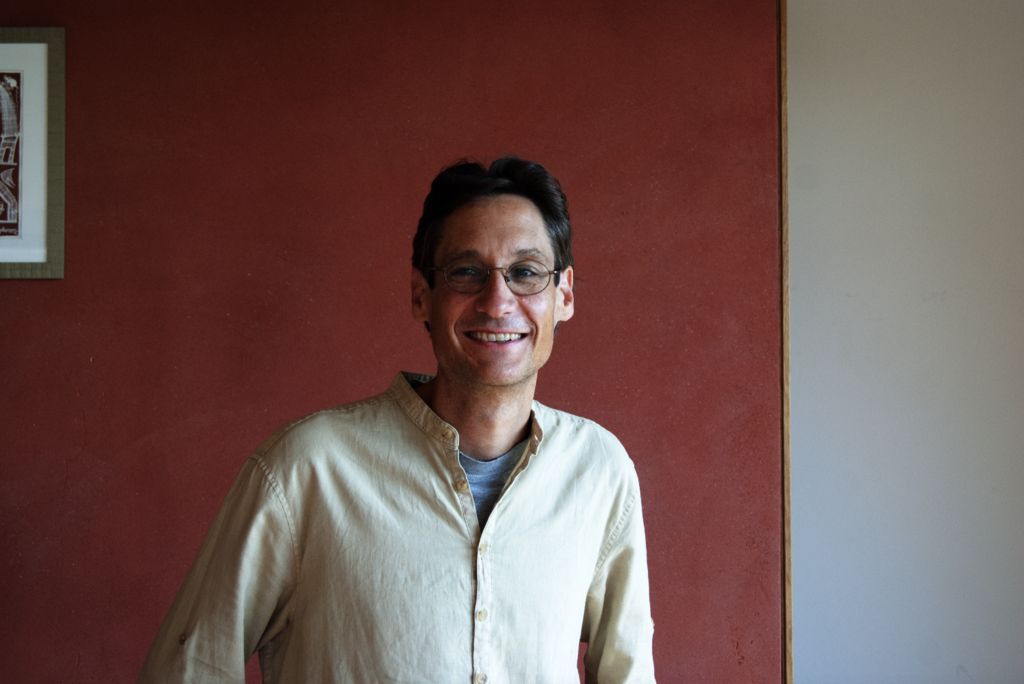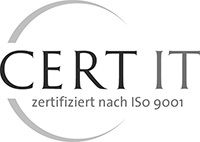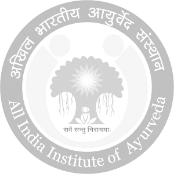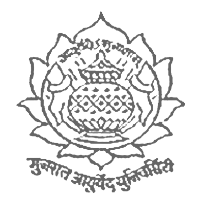Article by Marco Lebbing, General Practitioner and Medical Ayurveda Specialist
Summer is finally here. But with the rising temperatures and the beauty of the blossoming trees and flowers, many people experience allergic symptoms that can last into the autumn. Allergic rhinitis (allergic rhinitis) is known worldwide. Although it is considered a risk factor for the development of bronchial asthma, it is more of an annoying and bothersome condition than a threatening one. It is the chronicity and regular worsening on contact with relevant allergens that is distressing.
Two clinical studies with different approaches
Conventional medicine offers a mainly symptomatic therapy to reduce the symptoms. We will present here two studies investigating an Ayurvedic approach to the treatment of allergic rhinitis. Both were published in the journal Ayu in 2009. The first, "a clinical study of Anurjata Janita Pratishyaya (allergic rhinitis and a comparative evaluation of Nasya karma)" published by NEHA J. MODHA (TANK), V. D. SHUKLA, M. S. BAGHEL of the Institute of Post-Graduate Teaching and Research at Gujarat Ayurved University, Jamnagar, compares two different purifying nasal treatments with oral phytotherapeutic treatment. The second, "A clinical evaluation of Haridra Khanda and Pippalyadi Taila Nasya on Pratishayaya (allergic rhinitis)" published by CHHAYA BHAKTI, MANJUSHA RAJAGOPALA, A. K. SHAH., NARAYAN BAVALATTI of the same university compares oral treatment by means of a plant mixture known as Haridra Khanda and a nasal treatment by oil medicated with long pepper.
Both authors compare the modern concept of allergic rhinitis with the Ayurvedic concept of Pratishayaya. Modha et. al. specify this even further as vata-pratishyaya. Allergy is explained for both under the term "Asatmyaja Vyadhi (a disease arising from unwholesome things)" and according to the classical texts the effects are associated with a hereditary component, wrong food combinations (viruddhahara) or long-term poisoning with low intensity toxins (dushivisha - also includes unwholesome food combinations) and by the transition of seasons (ritu sandhi).
Heredity is mentioned in Sushruta and can be explained as the individual immunity (bala). This is determined at the time of conception and may condition, for example, an elevated level of IgE (allergy-type antibodies). Viruddhahara is seen in this context as food allergy or intolerance, which can cause all kinds of reactions and interactions with normal body metabolism. Caraka has additionally added the points of contamination and not following the dietary recommendations (Dushivisha acarya). These lead to various disorders contaminating the blood and the corresponding symptoms can be associated with allergic reactions. Further, following Vagbatha, the authors explain environmental allergies by the transition of seasons (Ritu sandhi) which aggravates all the three doshas (Tridosha prakopa). Contamination of body tissues (dhatus) may occur and unwanted diseases may arise (Asatmyaha Roga) if the seasonal routine is not followed properly.
According to Modha, three different disease-causing pathways exist. The first is contamination of the wind element (vayu), mainly by Vata aggravating factors. The second is Kapha/Pitta/Rakta dominance, also due to corresponding aggravating factors. The third is a combination of the above. All the three ways lead to obstruction of Udana Vata by Kapha/Pitta/Rakta. Of the three basic Ayurvedic treatments (soothing - samshamana, purifying - samshodhana and avoidance of the triggering factors - nidanaparivarjana), Caraka emphasizes the purifying treatment of the nose (Nasya). The repeated occurrence of the complaints and chronicity are explained by failure to completely purge the doshas. These remain at a predisposed level. Corresponding factors, which can also be seen as allergens, can then cause the repeatedly occurring symptoms.
Both the studies recruited the patients from Jamnagar hospital. Patients with symptoms of allergic rhinitis without complicating factors were selected. Patients with signs of infectious disease, anatomical changes such as curvature of the nasal septum (deviated septum), nasal mucosal growths (nasal polyps) or known systemic diseases were excluded. While no ethical evaluation is mentioned by Modha, the second study was approved by the Ethics Committee of Gujarat Ayurved University, Jamnagar.
1st study by Modha
Modha compared the effect of cleansing nasal treatment (Pradhana Nasya) with oil application. Assuming an inflammatory condition of the nasal mucous membranes, Curcuma (Haridra) was selected as a well known and experientially proven herb in inflammatory conditions with a blood purifying (raktashodhana) and antitoxic (vishaghna) quality for additional oral administration. A total of 69 patients were enrolled in the study and randomly divided into three groups.
Group A was treated with a paste of oil medicated with dried ginger. Patients received 6-8 drops of oil per nostril for 14 days. In group B, purifying treatment was given with fine kataphala powder at the classical dosage of 3 muchuti until successful purification (samyak shuddhi lakshana) was observed. On an average, the treatment was given for 3-6 days. In both groups, this was followed by oral treatment with "Sudha Haridra" in a dosage of 2 g with warm water or milk thrice daily for 21 days. Group C received only the oral medication just described. A follow up was done one month after the end of treatment.
Assessment of treatment efficacy included relief of subjective symptoms (obstruction of nasal breathing, runny nose, sneezing, loss of smell, headache, cough, itching, feeling of obstruction in the throat, redness around the nose, and sudden onset and end of runny nose - Akasmat Pravriti and Nivriti) on a scale of 0 to 3 (0 = no symptoms, 1 =mild symptoms, 2 = moderate symptoms, and 3 = full symptoms). Furthermore, objective criteria such as stool, urine and blood tests with special attention to blood eosinophil count and erythrocyte sedimentation rate were examined. The overall assessment was complete regression of symptoms = 100%, marked = 75-100%, moderate = 50-75%, general relief = 25-50%, and unchanged symptoms = < 25% improvement. In each group, 2 patients did not complete treatment. One patient from group B experienced excessive purging, others were unable to complete daily treatment in the hospital, had unfavorable conditions (apathaya sevana), or did not respond to treatment. Evaluation of the participants showed that suppression of natural reflexes (vegadharana), irregular or unstable seasons (ritu vaishamya) and inhalation of particles or smoke (dhuli rajah sevana) were the primary precipitating factors. In a good 95% of patients, nasal runny nose (Nasa Srava), sneezing (Kshavatu) and headache (Shirahshula) were the main complaints. All results are presented in detail in tables and the relief of the individual complaints within the individual therapy groups is shown. This additionally shows the even distribution of symptoms in the different groups.
Nasal obstruction, pharyngeal congestion, redness around the nose and eyes (conjunctivae) are seen as manifestations of an inflammatory reaction with involvement of blood tissue (rakta) and plasma tissue (rasa). For the most part, all groups showed a significant decrease in symptoms with slight differences among them. Significant changes in laboratory parameters could not be shown, although a non-significant decrease in erosophil count is presented in all three groups. The best results are obtained in group B with a reduction of more than 90% for most symptoms. Only headache (83.5%) and loss of smell (68.5%) were less improved, but still more or equal to the other groups. This is also reflected in the overall effect of treatment, with 91.3% in group B reporting significant improvement compared to 78.9% in group A and 76.2% in group C.
In the discussion, the authors attempt to make the connection between the different effects and the different characteristics of the procedures used. They conclude that ginger as well as cataphala break the disease-causing pathway through their pungent (tikshna) and hot (ushna) properties. The symptom relief can be explained by the kapha and vata reducing properties and a vata regulating (vata-anulomana) effect. In addition, both are described as anti-inflammatory and analgesic. Kataphala is said to have an anticholinergic effect, which relieves increased nasal secretions. Ginger is said to inhibit the release of inflammatory mediators and have a local anti-inflammatory effect. Haridra primarily acts on blood and plasma tissue-related symptoms. Through its antihistaminergic properties, it is thought to act directly on the allergic response and prevent the release of inflammatory mediators. In their reasoning, the authors conclude that the local cleansing treatment has a direct effect on acute symptoms and provides immediate relief, while the oral treatment has a systemic effect. The results further show a slightly better local effect by Kataphala as compared to ginger.
2nd study by Bhakti
The second publication by Bhakti et al. Examines the effect of Haridra khanda, a mixture of Curcuma (Haridra), Triphala (fruits of three different myrobalan trees), black pepper, long pepper, ginger (together Trikatu) and others. Of this, 6 g was administered twice daily as granules. This treatment was compared with an additional local application of an oil medicated with long pepper. This was administered three times over seven days, with a week's break each time, at a dosage of 4-8 drops per nostril. A follow up was done after two months. The effect on symptoms (Kshavathu = sneezing, Nasavarodha = nasal obstruction, Nasasrava = rhinorhoea - runny nose, Kasa = cough, Shirah shula = headache, Kandu = itching, Bhutva Bhutva = recurrence, Aruchi = loss of taste, Svarabheda = roughness of voice, Jvara = fever, Shirogaurava = heaviness in head, Shvasa Kashtata = difficulty in respiration and Gandha hani = anosmia - loss of sense of smell) was given a score from 0 to 4. The overall effect was assessed as per above scale and blood samples were also taken.
Of the 32 patients included, 26 discontinued treatment. Reasons for the discontinued patients are not given. According to the authors, dust and pollution were the main causes. Again, a significant reduction regarding all the above symptoms was shown in the two groups. Laboratory tests also showed a significant decrease in eosinophil cell count, while changes for white blood cell count and erythrocyte sedimentation rate were not significant. Again, the group with both local and systemic treatment showed better results on the whole. There was 53.33% significant improvement and 40% moderate improvement compared to 45.45% and 36.3% in the systemic only group.
Conclusion of both studies
The authors conclude from their findings that the plant mixture used helps to regenerate the body tissues and improve the resistance of the nasal mucous membranes. It is further discussed that many of the ingredients bring vata and kapha back to normal levels as primary disease-causing factors. The oil used further helps to clear local obstruction and clear blocked secretion through its light and fast spreading (vyavayi) properties. In addition, it is postulated to have a local immune system modulating effect. This is thought to reduce the inflammatory process and help prevent secondary infections through its antibacterial and its antiviral properties.
Both studies show encouraging results for the treatment of allergic rhinitis by Ayurvedic measures. Although complete regression was not reported in any group, the partial significant relief for all symptoms may serve as an indication that local as well as complementary systemic Ayurvedic treatment may help to reduce the burden of patients. Admittedly, the focus is also on a purely symptomatic approach. However, with regard to the genesis, the authors discuss approaches that suggest long-term relief is possible. The postulated modes of action also offer opportunities for further study and discussion. However, both studies include only a few patients and there was no control group.
Allergic rhinitis is largely triggered by exposure to allergens. With a study period of two months, an appropriate control group would certainly be useful to prevent a systemic failure due to a natural decrease of the allergens present. Additionally, a more in-depth statistical evaluation between the groups could have taken place to compare the individual treatments in more detail. In particular, the publication by Bhakti lacks a more comprehensive account of the overall study design, and neither study at any point explains the statistical methods by which the results were assessed. However, as treatment observations, both studies provide encouraging evidence of the effectiveness of symptom-reducing therapy for allergic rhinitis. It is additionally useful for therapists working in Europe, as most of the components used are readily available. Certainly, the studies motivate to perform nasal treatments in the next allergy season as alternative symptom-reducing treatments.












